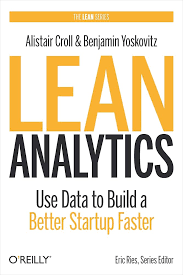In today’s data-driven world, businesses must embrace lean analytics and growth hacking strategies to achieve scalable and sustainable development. This paper explores how lean analytics supports hypothesis-driven decision-making, highlights the role of growth hacking in rapid market penetration, and provides real-world use cases demonstrating their combined potential for business development.
Lean Analytics, Business Development, and Growth Hacking: Driving Innovation and Sustainable Growth
1. Executive Summary
In today’s data-driven world, businesses must embrace lean analytics and growth hacking strategies to achieve scalable and sustainable development. This paper explores how lean analytics supports hypothesis-driven decision-making, highlights the role of growth hacking in rapid market penetration, and provides real-world use cases demonstrating their combined potential for business development.
2. Introduction
2.1. Lean Analytics: Overview
Lean Analytics is a framework that helps businesses measure only what matters. It is grounded in the principles of Lean Startup, focusing on:
- Rapid experimentation.
- Data-driven decision-making.
- Continuous learning and improvement.
2.2. Growth Hacking: Overview
Growth hacking involves innovative, data-driven tactics to achieve fast, scalable growth, especially for startups with limited budgets.
2.3. Business Development: Role in Growth
Business development aligns growth hacking and lean analytics with a company’s strategic objectives, ensuring long-term sustainability.
3. Key Concepts in Lean Analytics and Growth Hacking
3.1. Lean Analytics Cycle
- Define your audience: Identify your target users.
- Set goals: Focus on actionable metrics.
- Experiment: Run tests to validate assumptions.
- Analyze results: Learn from data and iterate.
3.2. Pirate Metrics (AARRR Framework)
- Acquisition: How users find your product.
- Activation: First positive user experience.
- Retention: Keeping users engaged.
- Revenue: Monetizing the user base.
- Referral: Leveraging users to attract new ones.
3.3. Growth Hacking Tactics
- Viral marketing campaigns.
- Conversion rate optimization (CRO).
- Product-led growth (PLG).
- Leveraging automation and AI for personalized experiences.
4. Use Cases
4.1. SaaS Startups: Optimizing User Acquisition
- Problem: High customer acquisition costs (CAC).
- Solution:
- Use A/B testing to optimize landing pages.
- Employ referral programs for viral growth.
- Track key metrics such as customer lifetime value (CLTV) and CAC ratios.
- Outcome: Increased user sign-ups by 40% while reducing CAC by 25%.
4.2. E-commerce Businesses: Enhancing Retention
- Problem: Low repeat purchase rates.
- Solution:
- Implement personalized email campaigns using AI.
- Optimize the checkout process to reduce cart abandonment.
- Use behavioral analytics to recommend relevant products.
- Outcome: Improved retention rates by 30% and a 20% increase in revenue per user.
4.3. Mobile Apps: Driving User Engagement
- Problem: High churn rates post-installation.
- Solution:
- Introduce gamification features.
- Utilize push notifications based on user behavior.
- Analyze real-time data to optimize in-app experiences.
- Outcome: Increased daily active users (DAUs) by 50%.
4.4. B2B Enterprises: Leveraging Account-Based Marketing (ABM)
- Problem: Poor lead-to-client conversion rates.
- Solution:
- Use lean analytics to identify high-value leads.
- Tailor campaigns using ABM strategies.
- Track pipeline metrics such as lead velocity and sales cycle time.
- Outcome: 3x improvement in conversion rates for enterprise clients.
4.5. Social Media Platforms: Viral Growth
- Problem: Limited user base growth.
- Solution:
- Leverage social proof and network effects.
- Launch incentivized sharing campaigns.
- Analyze growth funnels to optimize referral conversions.
- Outcome: User base doubled in 6 months through viral loops.
5. Lean Analytics Tools and Techniques
5.1. Metrics to Focus On
- North Star Metric (NSM): The single metric that reflects the value your product delivers.
- Cohort Analysis: Segmenting users to analyze retention and behavior.
- Churn Rate: Percentage of users leaving over time.
5.2. Tools for Lean Analytics and Growth Hacking
- Google Analytics: Tracking user behavior and website performance.
- Mixpanel: Advanced product analytics.
- Amplitude: Behavioral analytics for digital products.
- Hotjar: Heatmaps and user experience analysis.
- HubSpot: CRM and marketing automation for growth hacking.
6. Challenges in Implementing Lean Analytics and Growth Hacking
- Balancing speed with accuracy in data-driven experiments.
- Over-reliance on vanity metrics that don’t reflect real growth.
- Integrating analytics with organizational goals.
7. Future Trends
- AI-Driven Insights: Automating data analysis for faster decisions.
- Product-Led Growth (PLG): Using the product itself as the primary growth driver.
- Ethical Growth Hacking: Addressing user privacy and ethical considerations.
8. Comprehensive References
Books
- Croll, A., & Yoskovitz, B. (2013). Lean Analytics: Use Data to Build a Better Startup Faster. O'Reilly Media.
- Ellis, S., & Brown, M. (2010). Hacking Growth: How Today’s Fastest-Growing Companies Drive Breakout Success. Crown Business.
- Ries, E. (2011). The Lean Startup: How Today’s Entrepreneurs Use Continuous Innovation to Create Radically Successful Businesses. Crown Business.
- McClure, D. (2007). Startup Metrics for Pirates (AARRR).
Research Papers
- Fader, P. S., & Hardie, B. G. S. (2009). Customer-Base Valuation in a Contractual Setting. Marketing Science.
- Blank, S. (2013). Why the Lean Startup Changes Everything. Harvard Business Review.
Web Resources
- Mixpanel Blog – Insights into behavioral analytics.
- GrowthHackers Community – Case studies and growth hacking strategies.
- HubSpot Resources – Guides on CRM and marketing automation.
Tools and Software
- Google Analytics (analytics.google.com)
- Mixpanel (mixpanel.com)
- Hotjar (hotjar.com)
- HubSpot (hubspot.com)
9. Conclusion
By leveraging lean analytics and growth hacking, businesses can achieve rapid growth while maintaining long-term sustainability. These strategies are not just about metrics and hacks but about aligning with customer needs and driving continuous improvement.
PS: Here is the Mindmap of the Book for Download. Contact keencomputer.com for details.
Additional Links
- Lean Branding: An Expanded White Paper
- Lean B2B: Building Products Businesses Want
- Lean Six Sigma for Service Industries: A Comprehensive Guide
- Creating a WordPress Website incorporating Lean Marketing
- Lean IT Solutions
- IT Service Management and Lean, Devops and Continuous Delivery
- Zero to One: A White Paper
